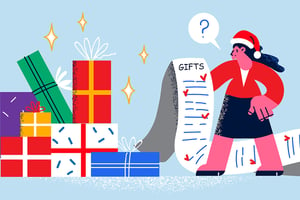Halloween is a time when creativity knows no bounds, especially in the advertising world. Brands...
Push vs pull marketing? 4 questions and answers
 Is telling someone they need your product as effective as them realising that on their own?
Is telling someone they need your product as effective as them realising that on their own?
When you put it like that, you’re inclined to say that it’s always better when a customer is naturally turned around to your product.
But the truth is that you usually have to do a fair bit of nudging along the way or else you’ll be disappointed with your conversions – and ultimately, your revenues.
The key is to know when to push and when to pull in marketing. There are too many possible scenarios to take you through all of them, but the answers to these four questions should help you figure out which of the two strategies would work best for your audience:
What are the pros and cons of push or pull marketing strategies?
So what is push and pull marketing? It’s important to make the distinction between the two. Pull marketing strategies focus on getting your target customers to discover your brand, products, and services. Meanwhile, push marketing strategies place your product or service in front of your target customers.
Or, to put it another way, you’re either working on the ‘pull’ of your brand or product, or simply pushing the benefits of your offering.
While push marketing is more suited to seasonal or one-off marketing campaigns and pull marketing to longer-term business growth strategies, the two can – and do – complement each other. So it's not a case of push vs pull marketing, but creating a strategy that incorporates both.
It’s unrealistic and unsustainable to stick to just one of the strategies. Push marketing strategies are generally the cheaper of the two (in terms of clicks) but you might struggle with converting customers without pull marketing tactics laying the foundations for your more sales-driven messaging.
Does it matter where the customer is in the awareness funnel?
Absolutely. The four main steps in the awareness funnel are:
- Unaware
- Problem aware
- Solution aware
- Product aware
For your customers who sit in the first two stages, it’s all about getting on their radar with some a good push marketing strategy. The customers who interact positively with this marketing then move along the funnel, actively looking to find a solution to their problem.
This is where pull marketing comes into its own, by gently presenting customers with a solution to their issue. This is arguably the most important point for a brand to ensure that they’re doing enough to identify themselves as the solution.
If you’ve done your job effectively, once customers have done their research and are product aware, your brand will be top of the list with a solution that matches all their requirements.
To get these customers ‘over the line’, having been thoroughly warmed up with push marketing tactics, you might want to shift back to a pull marketing strategy – perhaps with a nice money-off deal or some other sales pull method.

Is advertising still as effective as it once was?
Data from YouGov’s latest survey reveals that around 50% of the global population say that advertising isn’t as interesting as it used to be.
But that doesn’t tell the whole story. While consumers might be tuning out of ‘traditional’ advertising, there’s plenty of evidence to suggest that they’re still very much influenced by marketing in some shape or form.
For teens, for example, it’s influencers who inspire their purchases, with 70% of this demographic saying they trust them more than traditional celebrities. Meanwhile, 86% of women say they use social media for purchasing advice.
Influencer marketing is just the latest iteration of word-of-mouth marketing, which has always been the ‘ultimate’ form of advertising. But it doesn’t feel like advertising, per se.
Native advertising is similar in that 77% of consumers say they don’t interpret native ads as advertising. Instead, when the advert matches the form and function of the platform upon which it appears, consumers see it as an extension of the publisher’s content.
How do we read this in the context of push and pull marketing? Well, it would suggest that even push tactics need to have an element of ‘pull’ to be effective.
Can you combine the two?
Branded content in the publisher environment is a great form of combined push and pull marketing strategies in action. Well-written and constructed native articles can be useful to the ‘unaware’ and ‘problem aware’ customers who consider the content educational as opposed to sales-orientated.
Customers further along the awareness funnel can then get pulled into the article headlines that offer to solve their solution. Calls-to-action within these articles can easily convert customers that are at the end of their journey.
Either way, branded content in the publisher environment plays a key role at both ends of the customer journey and awareness funnel.


